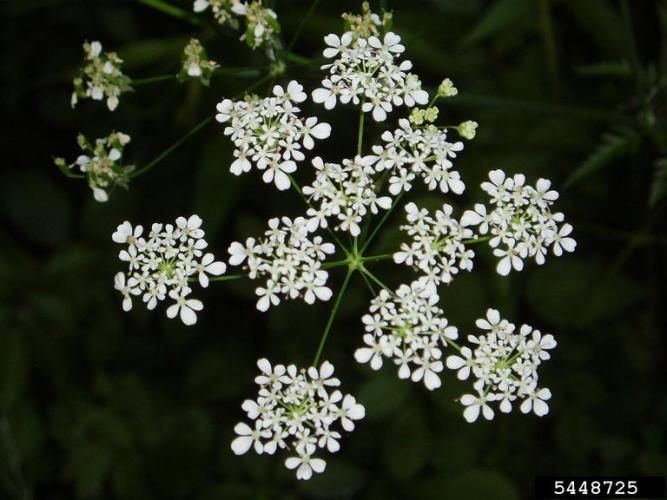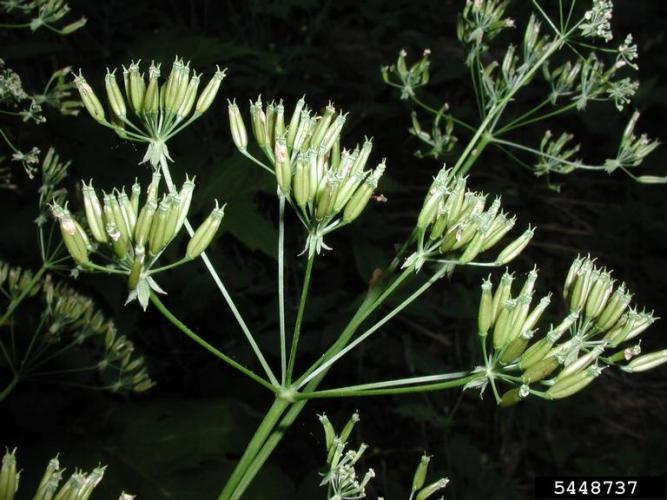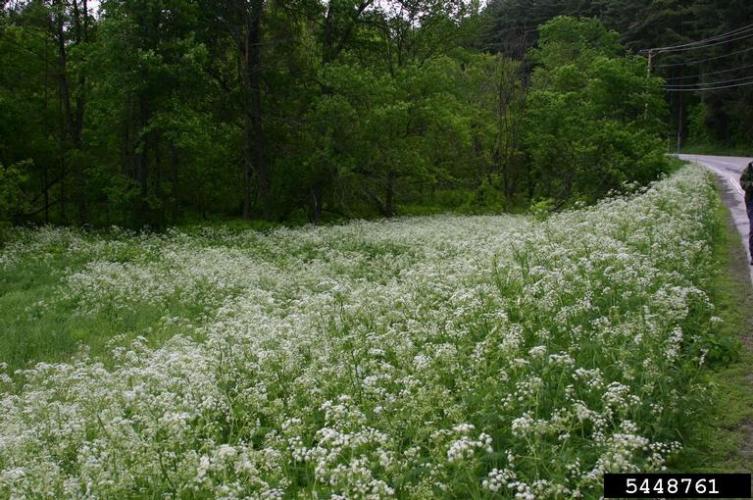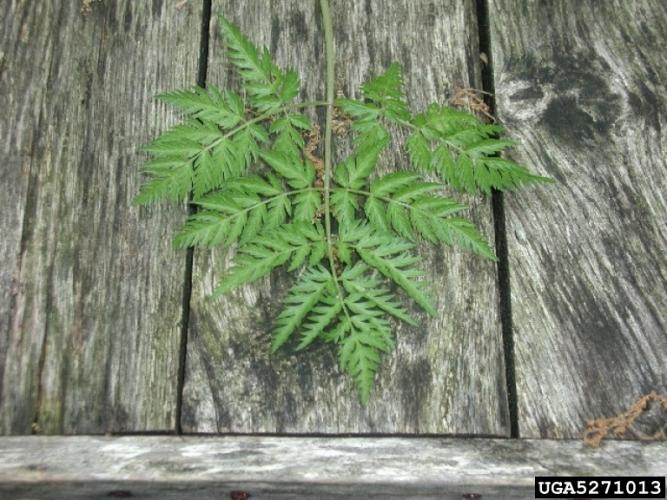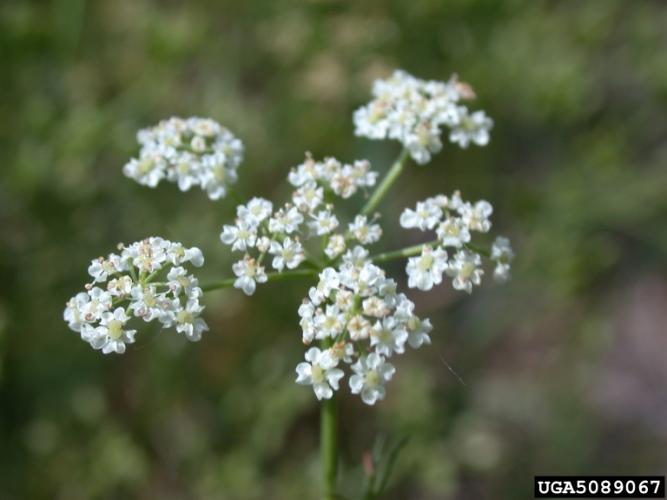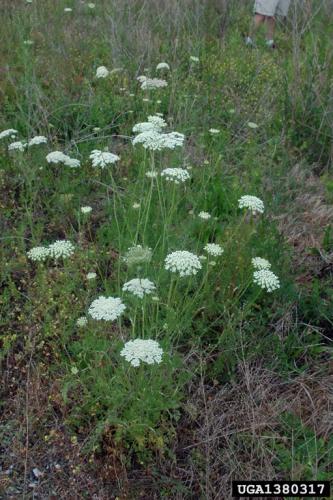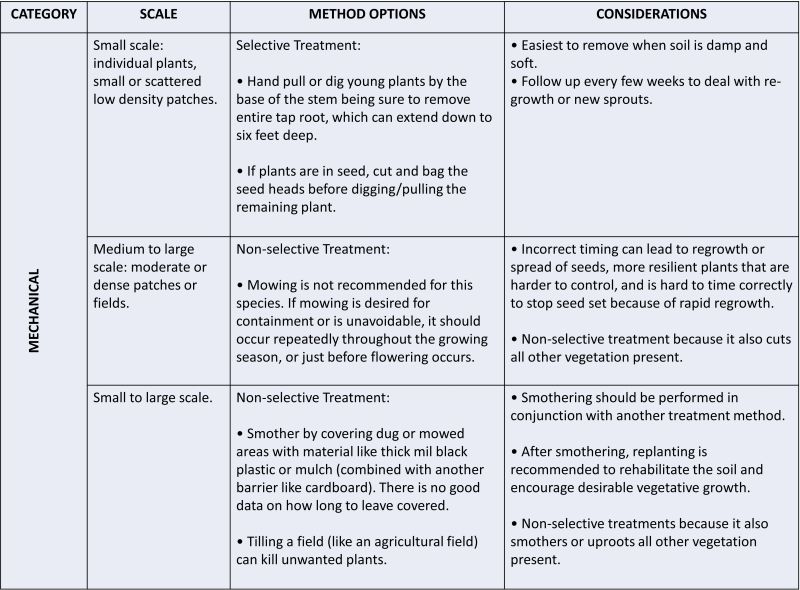Wild Chervil
Identification
**CAUTION! This plant contains toxins that cause minor skin irritation. When treating, wear appropriate clothing to prevent resinous substances from contacting skin.**
Appearance
Anthriscus sylvestris is a herbaceous biennial that grows up to 3.25 feet in height. The stems are hollow and covered in hairs.
Foliage
The plant has alternately arranged, compound, fern-like leaves. Each segment of the leaf can measure 0.5-2 inches in length.
Flowers
The umbels of this plant are large, having 6-15 rays that can reach up to 1.5 inches in length. Each of the bractlets is lance-ovate in shape and measures 0.1-0.25 inches in length. The flowers are white and have 5 notched petals. Anthriscus sylvestris blooms from May to June.
Fruit
The fruits are smooth, lanceolate in shape and measure 0.25 inches long. They have a pronounced beak that measures 0.04 inches long. The fruits start out green and turn brown as they ripen.
Look-a-Like
Distinguished from similar plants by stems that are ribbed or furrowed, entirely green, hairy on the lower portion and smooth on the upper portions and with a fringe of hairs at the stem nodes.
Biology
Origin
Native to Europe
Habitat
Abandoned Field, Agricultural Field, Edge, Open Disturbed Area, Pasture, Yard or Garden. Anthriscus sylvestris grows well in rich moist soils and is most commonly found along roadsides, meadows, and pastures. It is particularly problematic in hayfields and pastures in central Vermont
Life cycle
Anthriscus sylvestris can reproduce both by seed and by vegetative means. Vegetatively, it makes use of aggressive, fast spreading taproots that have lateral root buds capable of sprouting new plants.
Ecological Threat
Anthriscus sylvestris may be transported by vehicles, particularly those used to mow it down after it has set seed, as well as people, animals, and wind. Since it is tall and grows aggressively, it may outcompete native vegetation by forming extensive stands resulting in shading of other species, and by utilizing resources more effectively.
Vermont Distribution
Citations
Photo Credit
5448725, 5448737, 5448761, Leslie J. Mehrhoff, University of Connecticut, Bugwood.org
1380317, Chris Evans, University of Illinois, Bugwood.org
5089067, Mary Ellen (Mel) Harte, Bugwood.org
5271013, Leslie J. Mehrhoff, University of Connecticut
Information Credit
Invasive Plant Atlas of New England, Second Link
Invasive Species Council of Metro Vancouver BMPs for Wild Chervil
Invasive Species Council of British Columbia Factsheet for Wild Chervil
King County Noxious Weed Control Program BMPs for Wild Chervil
Washington State University Extension Information on Wild Chervil
Jefferson County Noxious Weed Control Board BMPs for Wild Chervil
UC Davis Weed Control in Natural Areas in the Western United States
